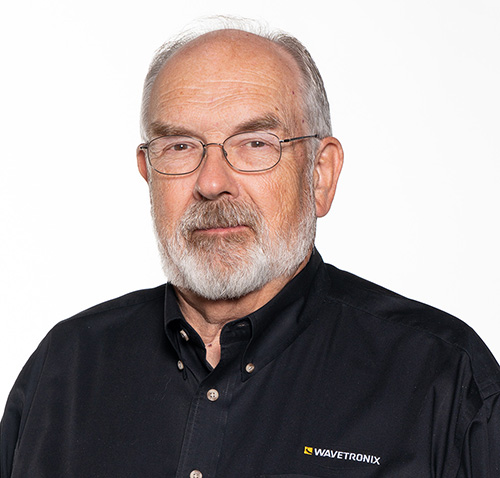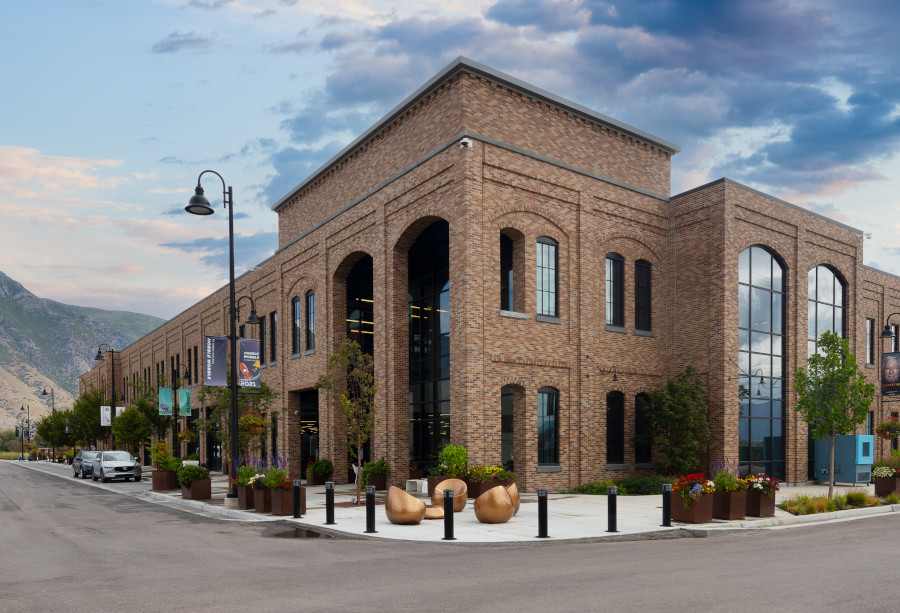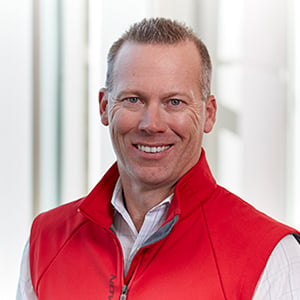Learn how the collaborative culture at Wavetronix has connected with the local community and shaped their new corporate home in Springville, Utah.
 Scott Jensen, Chief Architect
Scott Jensen, Chief Architect
Physical space plays an important role in defining a company’s culture.
In the first part of my interview series with Scott Jensen, chief architect at engineering company Wavetronix, we discussed how his company has utilized design strategies and employee policies to prioritize workplace well-being.
Further into our conversation, Scott and I explored how Wavetronix created a culture of collaboration and community. It’s a culture that goes beyond how employees engage with one another internally to broadly encompass how Wavetronix connects with the local community through its new space in Springville, Utah.
This conversation has been lightly edited for clarity.
Jonathan Webb: It’s been about a year since you guys moved to Springville. How have employees settled into the new, open space?
Scott Jensen: Initially, we had a lot of people who missed having their private, personal cubicle and didn’t immediately warm up to the open environment. But once those individuals spent some time in the new space, they started to understand. Team members began to recognize the value of being closer to the people they work with on a daily basis, rather than secluding themselves in a space and working in a physical silo.
In fact, collaboration skyrocketed. People were talking to each other. They were turning around in their seats to discuss joint projects as well as other topics.
People are building closer relationships as colleagues, but there’s also an organic social connection. That has really helped to strengthen our team.
Webb: The topic of hybrid employees comes up in almost every conversation I have with workplace clients. It seems that a lot of companies still haven’t figured out the technology aspect of how to have teams with four or five people in the office and two or three people at home. How have you handled that when it comes to encouraging engagement and collaboration?
Jensen: We have "huddle rooms" that work really well. These small conference rooms can be pre-booked. And they all have two monitors.
One screen is dedicated to the people who are not physically present but who are on the call remotely. We request that everyone on the call have their camera turned on, unless they don’t have enough internet bandwidth. When we get all the faces there, everybody’s looking at each other and it’s almost like really being there. The second monitor is then used for sharing content.
Webb: That’s really interesting. It highlights the inclusive culture at Wavetronix to make everyone feel present. How else does Wavetronix support inclusivity?
Jensen: We have a unique relationship with our employees’ families and the wider community. And it's not just for Wavetronix, but also for all of our partners, architects, contractors, and everyone with which we do business in the city.
In December, we had a Christmas party out on the street, like a big street fair. We had around 700 people there including families, guests, and community members.
With that in mind, we’re creating a “town square” for the next building we’re working on. It has garage doors that open onto the town area and into a courtyard. That gives us a huge indoor-outdoor space where we can host big events with our employees, guests, and friends.
Beyond our own employees, our corporate relationship with people in the community is a critical, ongoing priority for us.
Webb: What a great way to curate that connectivity with the community. You’re not just another business there. Does it make the area around Wavetronix more of a destination?
Jensen: It really does. The city has actually changed some of the zoning because of us. They want to promote the things we’re doing. They like the idea of having this inclusive corporate culture as the front door to Springville.
Webb: From an attraction standpoint, I imagine it's rather unique for new employees to see that connection between the city and Wavetronix.

Jensen: Absolutely. When we initially started working with Springville City, they were excited, but a little hesitant. They didn’t know us. They didn’t know if we were going to follow through with what we were planning to do.
Now, we’ve been working with them for four years. We have an excellent track record and they know what to expect from us. We know what we can expect from them. It’s a very positive relationship.
Webb: Fantastic insights. Thank you so much for sharing with me.
Characterized by Collaboration and Community
With its unique "town square" concept and relationship with Springville, Wavetronix is an impressive example of how an employer can establish a sense of community both inside and outside the office.
For more inspiration on how workplaces can drive collaboration and community relationships, take a look at our case studies from Northwestern Mutual and Upward.
Stay tuned for additional insights about industrial workplaces in the coming weeks!






